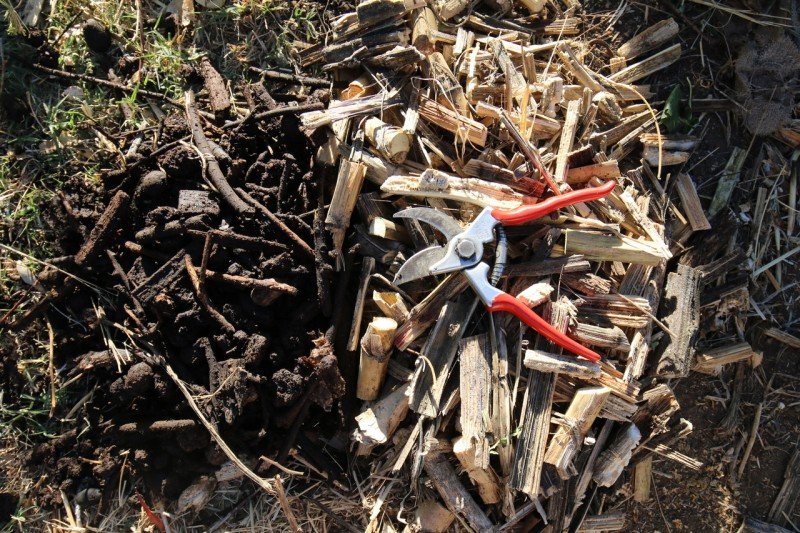Compost too dense?
Imagine you live at the very bottom of a compost pile. As the pile is added to every week or so, the volume above you gets larger and heavier with every new compost making session. Before too long you are living under a few hundred kilos of breaking-down compost, the air getting squished out and the pressure building.
Does this sound like conditions at the bottom of your compost pile? This is a compost where the ‘density’ is too high.
What can we do as composters, as custodians of the pile (be it a bin or a bay), to make life a little sweeter for the helpful creatures that do all that hard composting work and have to live in these conditions?
We can turn our compost, or do in-situ aeration with a compost screw – and there are time to do those things - but if our pile is short of oxygen and things are getting heavy and sludgy down there, we really need to change our compost recipe.
I wish more compost educators spread this word, but the most effective aeration is done by the very ingredients we build the pile out of.
If our compost is heavy and lacking oxygen, it’s because we haven’t added enough porous and “air-pocket creating” carbon-rich and textured materials. Things like well-rotted woodchips, coarse straw or the chopped up woody stems of plants like artichokes, corn and sunflowers are full of air spaces, and also create air pockets around them, all this adds to the aeration of the whole pile.
At YIMBY*, our composters add these air-inducing ingredients right though their pile, but we also encourage them to build the bottom third of their piles even a little richer in these porous and air-pocket creating materials than the rest of the pile. This helps to counteract the effect of the weight of the pile above.
If your compost is like the description at the start of this article, next time you start building a new pile, try leaning a bit harder into those porous and air-pocket creating carbon-rich materials in the bottom third of your pile, and keep a good amount of them though the rest of your pile too.
By the time you come to turning or spreading your compost, I think you’ll like what you see down there. If there are woody residues you can just put them back in your active compost, they will eventually break down.
If your pile is already too woody and dry, this advice is not for you. We’ll have a look at woody and dry piles next week.
AUTHOR: JOEL MEADOWS
Joel Meadows works with Yes In My Back Yard, (YIMBY), a community-scale composting initiative in Castlemaine and surrounds. Send questions or comments to hello@yimbycompost.com
This was first published in the Midland Express on the 13 March 2024

